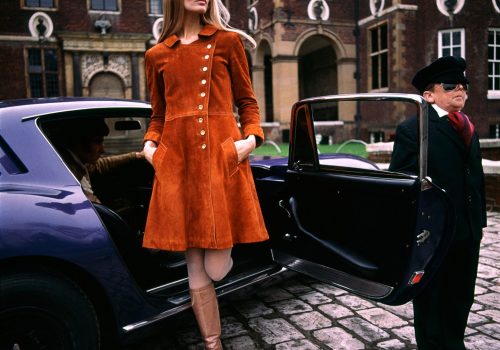An exhibition in Palm Beach, Florida focuses on photography that documents and chronicles our desire for travel. Planes, trains, and automobiles are the vehicles that facilitate travel; Our modes of transportation contextualize our experiences, complement our characters, and archive the epochs in which we live.
Travel-based photography provided the curious public with a visual approximation of the range of human diversity manifest throughout the four corners of the world. Since photography’s inception, viewers have been intrigued by its innate ability to broaden our range of the “knowable”. The growth of the upper middle class economically, allowed for leisure time – which encouraged traveling. Simultaneously, technological leaps improved modes of transportation. Meanwhile, the growth in the public’s interest in photography was kindled by the popularization of point and shoot cameras, mainly Brownie and Kodak, by advertising “you push the button, we do the rest”. People could see and sense from photographs, places they had never been to before. Photography created its own “quasi- reality”, expanding our experiences, taking us to places outside of our normal domestic situations and extending and encouraging our imaginations.
Photographers recorded the physical world they traveled to and returned with memories. Photography allowed people to share their experiences, recording what they thought was important and what they wanted to remember. Travel photographs, which share a broad range of imagery, were able to incorporate a sense of movement in static images, they often had a dynamic quality to them. Jacques Henri Lartigue’s bobsled race evoked the sound of tires ripping against the dirt track, Elliott Erwitt’s Wyoming, 1954, induced the smell of smog and the deafening sound of a train approaching. In a subtler way, Sabine Weiss’s Gare at St. Lazare, Paris, presented a Parisian station in a cold night, steam traveling up the sides of a train while a porter moves quietly about. Travel photographs offered an option of vicarious participation to the viewer. There was a fantasy and the possibility of escape from daily life. Frank Horvat’s Gare Saint Lazare, Paris shows the energy, romance, and motion associated with travel, while Brett Weston’s Untitled (Train Overpass, New York), although shot in 1943, still speaks today to the ever-emblematic New York City corner.
The work of such photographers as Berenice Abbott, Bill Brandt, Brian Duffy, Elliott Erwitt, Ormond Gigli, Frank Horvat, Jacque Henri Lartigue, Jim Lee, Gered Mankowitz, Sabine Weiss, and Bill Witt to name a few, offered a dynamic sense of change. The machines in these images, (i.e. vehicles, trains, and planes) created possibilities; they became vessels for transportation as well as change. Taken outdoors, the images usually capture a physical movement, offering a degree of liberation to be found in each image. Not bound by the gravity of the world, the photographs of this exhibition at Holden Luntz Gallery suggest travel as something adventurous and positive. Travel opens doors; in leaving home, there is a voyeuristic pleasure of looking at photographs, searching for newness and excitement.
Travels – Trains, planes, automobiles
May 5 – June 9, 2018
Holden Luntz Gallery
332 Worth Ave
Palm Beach, FL 33480
USA
















